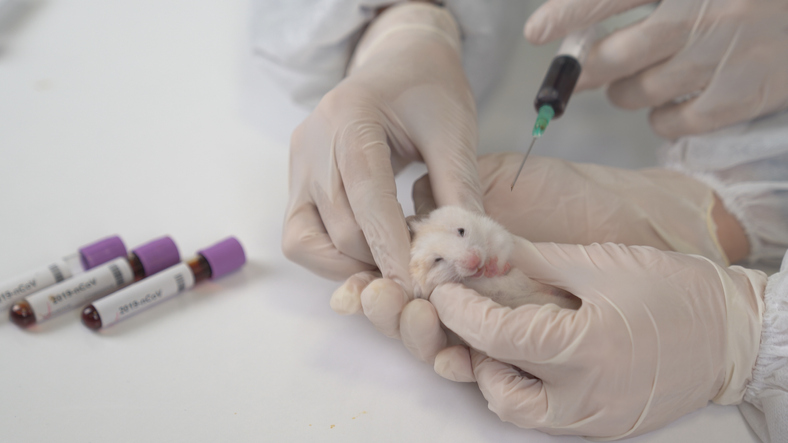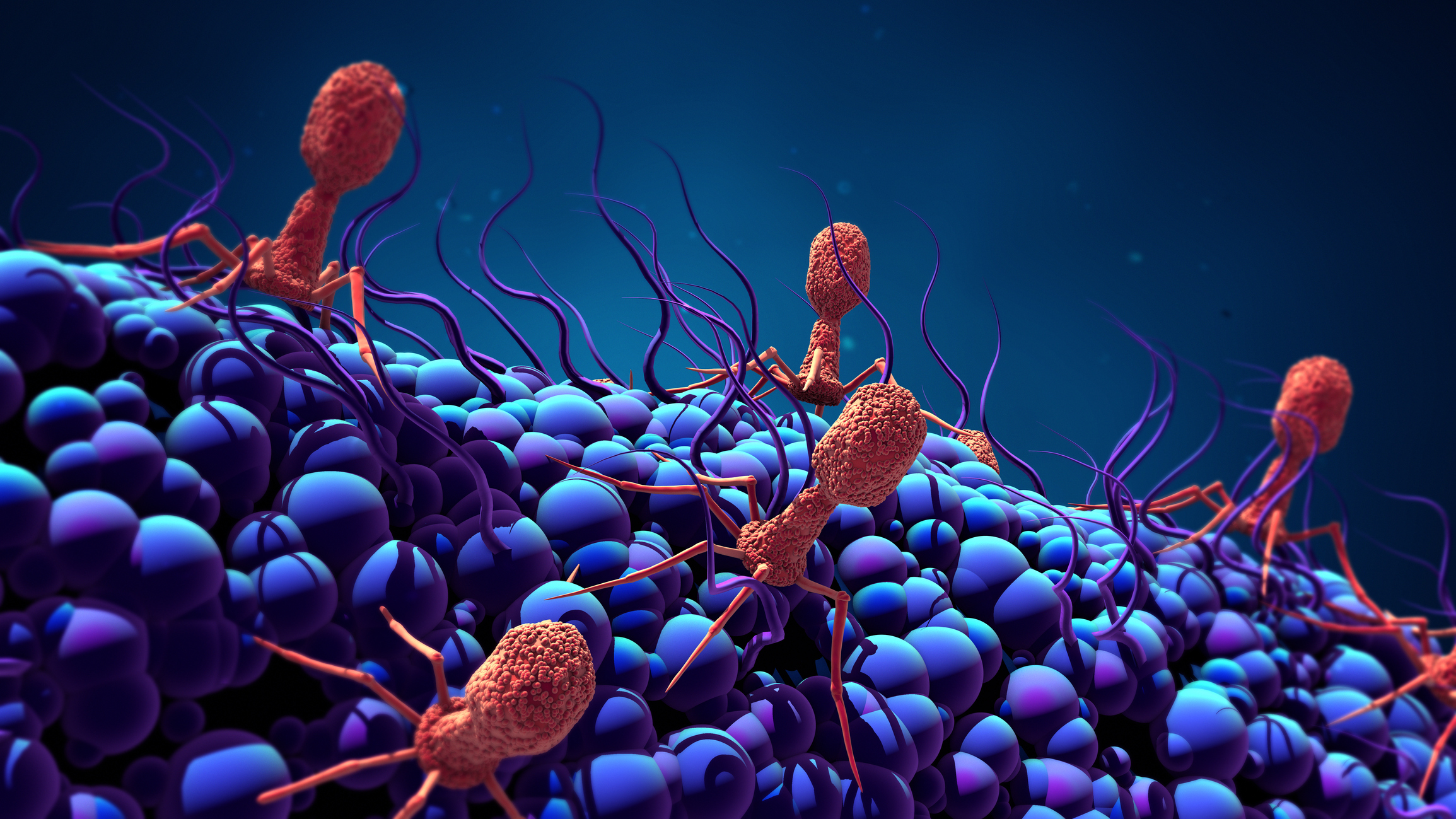What is vivisection?
Both live and deceased animals are currently used for commercial, scientific, or educational purposes in a range of capacities. This is usually for medical, veterinary, or environmental research.
‘Vivisection’ refers specifically to experimentation on a living animal.
Vivisection is though sometimes used by opponents as a pejorative synonym for the more general term of ‘animal testing’, whereby the organism may be living or dead.
Despite some common suggestions to the contrary, the use of vivisection in cosmetics production has been banned in the UK since 1998. This was consolidated further by an EU-wide ban on all cosmetics-related animal research in 2009. Although vivisection for cosmetic testing is banned across the EU, it is not currently banned in the United States of Ameria.


The UK currently permits vivisection for the purposes of science and medical research.
How much research is undertaken on animals in the UK?
According to the Home Office, in 2020, a total of 2.88 million vivisection procedures were carried in Great Britain on live animals. The 2020 figures represented the lowest animal experimentation total since 2004.

Over two thirds of animal research is conducted on mice.
Testing was split into what are labelled as experimental procedures, and those procedures focusing on the breeding of genetically altered animals.
Experimental procedures were said to account for 50% of the 2.8 million procedures. Experimental procedures are those where animals are used in scientific studies for purposes such as: basic research and the development of treatments, safety testing of pharmaceuticals and other substances, specific surgical training and education, environmental research and species protection. The top three research areas being targeted were the immune system (20%), the nervous system (18%) and cancer (14%).
In 2020, 57% of experimental procedures were said to involve mice, 14% involve a rat, 13% involve fish, and 9% involved birds. 1% of experiments were said to involve ‘specially protected species’ such as cats, dogs, horses and primates. Under government statistics, these figures on the number of procedures do no relate to the ‘number of animals’ as some animals may be used in mutiple experimental procedures.
Procedures relating to the breeding of genetically altered animals relate to animals whose genes have mutated or have been modified. These animals are used to produce ‘Genetically Altered’ offspring for use in experimental procedures but are not themselves used in experimental procedures.
The case made for vivisection
Supporters of vivisection argue that it has been invaluable in the development of medical science and the understanding of the human condition. Animal research is painted as central to medical progress, and the development of many life saving and safe medical treatments.
Matthew Bailey, President of the Foundation for Biomedical Research, has said complete replacements to vivisection remain an unlikely “until scientists have answered every question that needs to be answered about a full living system”.
A 2017 report published by the Foundation for Biomedical Research (FBR) defended animal testing as a “vital stage in the process of developing new treatments”. The report reiterated the significant numbers of fatal diseases which animal testing has allowed humans to combat. Existing vaccines for typhus, yellow fever and polio, for instance have all said to have been reliant on live animal tests.
Similarly, scientists discovered the cause of diabetes through tests conducted on dogs. Canadian scientists found that giving insulin to a dog whose pancreas had been removed successfully lowered its blood sugar. This enabled the biochemist James Collop to develop insulin which could be used in humans to treat diabetes.
During the COVID-19 pandemic of 2020, Pfizer and its partner BioNTech confirmed that its rapidly formulated vaccine had been tested on “nonhuman primates and mice”, raising concern from animal rights defenders.
Recognising the severity of the global pandemic, the Vegan Society released a statement acknowledging the near-necessity of laboratory animal research in select conditions:
“In the case of Covid-19, vaccination will play a fundamental role in tackling the pandemic and saving lives. As all vaccines currently are tested on animals, at this stage it is impossible to have a vaccine that has been created without animal use .”
Advocates of vivisection stress that scientists are continually striving to reduce, refine and replace live animals in all areas of research. They point to how anaesthetic is typically used, and how minimising animal suffering is a requirement of the Animal Welfare Act 2006.
Research groups opposed to any the tightening of rules around vivisection in the United Kingdom say that such an approach would merely result in the shifting of animal research work abroad. It is argued that this would harm the UK research sector, and see the work being undertaken overseas, where research standards and procedures in terms of animal welfare are less regulated than in the UK.
The case made against vivisection
The practice of vivisection has raised a variety of ethical, welfare and scientific concerns over the past decades. The anti vivisection movement hold that a painful or stressful experiment on a living animal for any purpose is morally abhorrent – particularly given the inability of the animal to communicate consent.
Campaigners dismiss claims that the regulations governing the vivisection process are capable of reducing the severe suffering endured by many animals.
Arguments around the efficacy of animal testing have been also been questioned, particularly given what is known as ‘species difference’. Species difference refers to the near impossibility that animals react identically to human counterparts. While each species reacts differently to chemical formulae, the result of a test may likewise be affected by an animal’s age, sex, diet or living conditions, lessening the likelihood of predicting human reaction. Penicillin, for example, was successfully tested on mice, yet is thought to kill guinea pigs within days, due to the floral bacteria in their stomachs.
Opponents of animal testing regularly recall the thousands of foetal deaths caused by the drug Thalidomide during 1950s-60s. Similarly, March 2006 saw six men fighting for their lives – and one losing parts of his hands and feet – following the ‘Elephant Man’ trial testing the drug Theralizumab. Both of these drugs had cleared all stages of animal testing. While extreme reactions such as these are rare, both are testament to the persistent risks involved with using animals as models of the human organism.
Regulating vivisection in the UK
In the United Kingdom, testing on live animals is regulated under the Animals (Scientific Procedures) Act 1986 (ASPA). This legislation adopted the ethical principle of the Three Rs.
First defined in 1959, the 3Rs refer to Replacement (replacing animal experiments with alternative techniques where possible); Refinement (modifying tests to inflict the least suffering possible to animals); and Reduction (reducing the total number of animals which are subject to testing).
Before animal testing is permitted, the Animals and Scientific Procedures Act requires three licences to be in existence: a personal licence for each person conducting experiments on animals, a project licence for the programme of work, and an establishment licence for the location of research.
While the use of animal testing for non-medical products has shown to be opposed by the public, fewer place the welfare of laboratory animals above the argument that animal research is necessary for the development of life saving medical treatments. The use of apes – man’s closest genetic relative – remains particularly controversial, and has been illegal in the UK since 1986.
The history of animal testing in the UK
Testing on animals has a long and, latterly, controversial history.
In 1859, Charles Darwin’s evolutionary theory reinforced the conception that animals could serve as models for humans in the study of biology and physiology.
British women in Florence, Italy, are thought to have led the first organised protest against vivisection in 1863. The Cruelty to Animals Act, allowing the use of anaesthetics during vivisection, was passed in England in 1876.
Animal testing peaked in the early 1970s, and has been in decline since, due to both increased public pressure to reduce the numbers of animals tested and the development of available alternatives. This growing public discomfort led manufacturers and retailers to advertise their ‘cruelty-free’ credentials. Anita Roddick’s ‘Body Shop’ chain was at the forefront of this movement in 1976.
In response to widespread protests at testing conditions and regulations, the Animals (Scientific Procedures) Act 1986 outlined guidelines and regulations for scientific and commercial testing in the UK. The Animal Procedures Committee, an advisory, non-departmental public body, was established to advise the Home Secretary on all matters relating to animal testing. This remains the UK’s primary source of legislation today.
At the start of the Twenty First Century there was an increase in violence and terrorism relating to the use of animals in scientific procedures. In August 2000, animal liberation extremists placed petrol bombs in five cars belonging to staff from the Huntingdon Life Sciences laboratory in Cambridgeshire, causing extensive damage. The threat from extremists led the bankers of Huntingdon Life Sciences to withdraw their credit, for fear of reprisals.
In September 2010, the European Union’s Directive 2010/63 was passed to regulate animal welfare standard throughout EU member states. The European Union stated that the aim of the new Directive was to strengthen legislation, improve the welfare of those animals still used, and to “firmly anchor” the principle of the Three Rs, to Reduce, Refine and Replace the use of animals, in EU legislation. It passed into UK law on 1st January 2013.
In July 2010, figures published by the Home Office showed that experiments on animals in the UK had fallen by 1% to just over 3.6 million. That year, the Conservative-Liberal Democrat coalition government committed to reducing the use of animals in scientific research.
The Government’s delivery plan published, in February 2014, outlined a strategy for promoting alternative methods of delivering fast, high-quality research without the use of live animals. The Dr Hadwen Trust for Humane Research welcomed the news and expressed the hope that this marked the beginning of a new trend in the increased use of animal replacement techniques.
Animal testing post Brexit
During the Brexit transition period, concern was raised over the prospect of increased animal testing in a post-Brexit world. It was also suggested that data gathered from EU-based experiments might no longer be accessible to the UK. This in turn fueled concern that tests would need to be repeated on domestic soil.
The UK had previously adhered to the EU regulation aimed at limiting the health and environmental risks posed by chemical usage. The EU’s REACH legislation (Registration, Evaluation, Authorisation and Restriction of Chemicals) kept animal testing to a minimum by sharing testing results between member states.
Following Brexit, the UK established its own REACH regime which replicated, to the greatest extent possible, the EU’s regulations. While data sharing remains uncertain, Parliamentary Under-Secretary of State, Victoria Prentis MP, has confirmed that the UK will “continue to be at the forefront of opposing animal tests where alternative approaches can be used”.
Quotes
“Testing medicines on animals is a fundamentally flawed practice. Non-human animals react differently from humans to drugs and chemicals. Many advanced methods are now available to replace the use of animals in research, methods which are tailored not just specifically to humans, but to specific genetic groups. This renders testing on animals not only unethical and cruel, but inferior in its efficacy to the new methods. We believe it’s time for Government regulators to catch up with the science, and free thousands of animals from a degrading and often painful life and death.”- Brian May, guitarist from Queen and Founder of the Save Me Trust, 2017
“Governments and researchers must embrace advances in science and technology and reject misleading and harmful tests – better for animals and people.” – Downton Abbey and Unforgotten actor Peter Egan, 2017
Statistics
In 2020, 2.88 million procedures were carried out in Great Britain involving living animals. This was a 15% decrease on 2019, and the lowest number of procedures since 2004 (Home Office, 2021)
On average, the protein-coding regions of the mouse and human genomes are 85 per cent identical; some genes are 99 per cent identical, while others are only 60 per cent identical. Monkeys and humans share anywhere between 96 per cent to 99 per cent of genes. (Foundation for Biomedical Research, 2017)
Two thirds of the public do not feel well-informed about the use of animals in research. Publix interest in finding out more about work to find alternatives and improve the welfare of animals in research is high. and has risen. (Ipsos Mori, 2019)
Recent polls reveal a gap in public perception of animal testing and the reality of procedures. In 2018, for example, 38% of the British public wrongly believed that testing cosmetics on animals is permitted in the UK. [Public attitudes to Animal Research in 2018, Department for Business, Energy, and Industrial Strategy]










